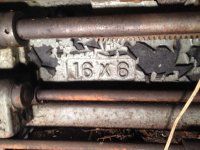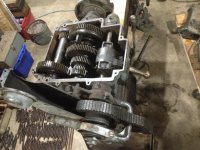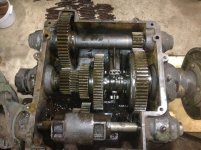salvageworkshop
Plastic
- Joined
- Oct 28, 2018
Long time reader, first time poster!
This my "new" to me Hendey 16x6 lathe that we rescued from the location you see it at in the pictures. I believe the serial number is wc-23213.
I was hoping Hendeyman can tell me any history on its age and what it came with / who purchased it.
Also is anyone familiar with the chain drive setup that is on mine? Is that a something someone built or changed after it left the factory?
Thanks in advance!





This my "new" to me Hendey 16x6 lathe that we rescued from the location you see it at in the pictures. I believe the serial number is wc-23213.
I was hoping Hendeyman can tell me any history on its age and what it came with / who purchased it.
Also is anyone familiar with the chain drive setup that is on mine? Is that a something someone built or changed after it left the factory?
Thanks in advance!


















